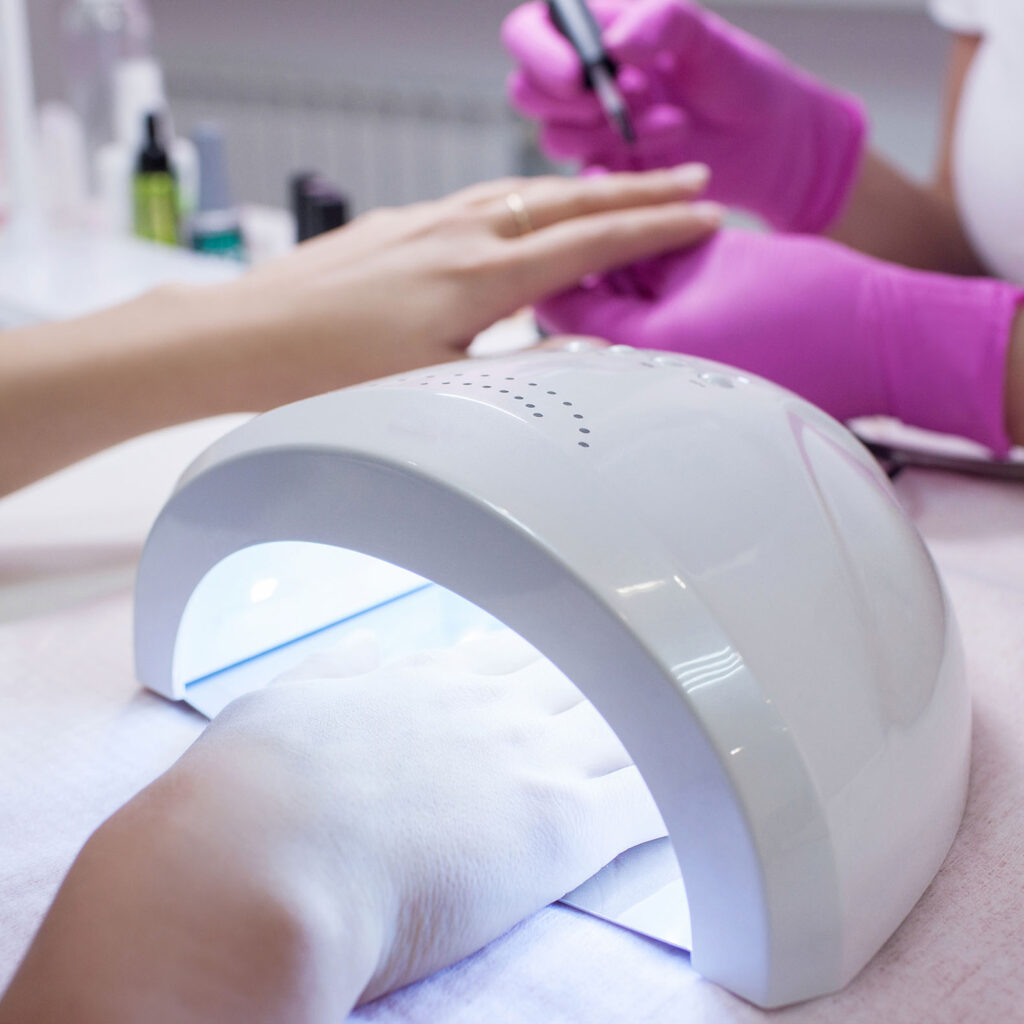Light quality matters

Light curing devices are an essential part of professional nail salons. However, not all devices are the same - the differences in quality are considerable and affect both the durability of the modeling and the safety of nail and skin. In this article, we highlight the most important differences and explain why it is worth opting for a high-quality device.
A decisive factor for the quality of a light curing device is the wavelength and light intensity. Professional devices work with UV or LED technology and are tuned to ensure optimum curing of the gels or UV coatings used. The wavelengths of UV and LED light curing devices play a decisive role in the curing of gel and UV coating products. Here are the most important differences.
UV LAMPS (TUBE DEVICES)
- Work in the range from 315 to 400 nm (UV-A radiation).
- Most UV gels require a wavelength of around 365 to 385 nm for optimum curing.
- These devices use fluorescent tubes with a UV coating.
- The tubes must be replaced regularly as they lose intensity over time (approx. every six months with daily use).
LED LAMPS
- Usually work with a specific wavelength of 365 to 405 nm.
- LED technology is more efficient as it is specifically matched to the photoinitiators in modern gels and UV coatings.
- LEDs have a long service life (up to 50,000 hours) and do not need to be replaced.
- Curing is faster than with UV lamps, often in 30-60 seconds instead of two minutes.
HYBRID LAMPS (UV/LED COMBINATION)
- Combine different wavelengths (365 to 405 nm) to optimally cure both classic UV gels and modern LED gels.
- Particularly useful for studios that work with different gel systems.
APPLICABLE DIRECTIVES MUST BE OBSERVED
A valid CE mark is essential for safety, legal compliance and consumer confidence.
The CE mark shows that the appliance complies with the applicable EU directives and makes it easier to prove that all the necessary tests have been carried out. Inexpensive devices often have uneven light distribution or insufficient power, which can lead to incomplete curing. The result: lifting, cracking or a sticky film that does not disappear after the specified curing time, even with gels that should cure without a sweating layer. This is a sign of inadequate polymerization, which significantly impairs the durability and resistance of the modeling. High-quality devices, on the other hand, are specially developed for common gel and UV lacquer systems and ensure even, fast and reliable curing.
DURABILITY AND SAFETY OF THE MODELING
An incompletely cured product can have serious consequences:
- The adhesion of the gel or UV lacquer is impaired, resulting in faster peeling.
- Insufficiently cured products can release residual monomers, which can lead to skin irritation or allergies.
- Incorrect curing can reduce the longevity of the nail modeling and requires more frequent touch-ups.
- A high-quality light curing device minimizes these risks thanks to precisely coordinated curing technology.
QUALITY OF PROCESSING AND DURABILITY
Some inexpensive devices emit unnecessarily high levels of UV light, which can lead to skin ageing or even an increased risk of skin cancer.
- High-quality models are equipped with protective mechanisms to minimize the impact on the skin.
- Some premium devices work with “low heat mode” functions to make curing more gentle and avoid unpleasant burning.
CONCLUSION: QUALITY PAYS OFF
A high-quality light curing device is an investment in durability, safety and professional results. While inexpensive alternatives often seem tempting, they can cost more in the long run - be it through frequent touch-ups, premature replacement of the device or health risks. Those who rely on high-quality UV/LED technology ensure satisfied customers and beautiful nails in the long term - without compromising on health or quality.
